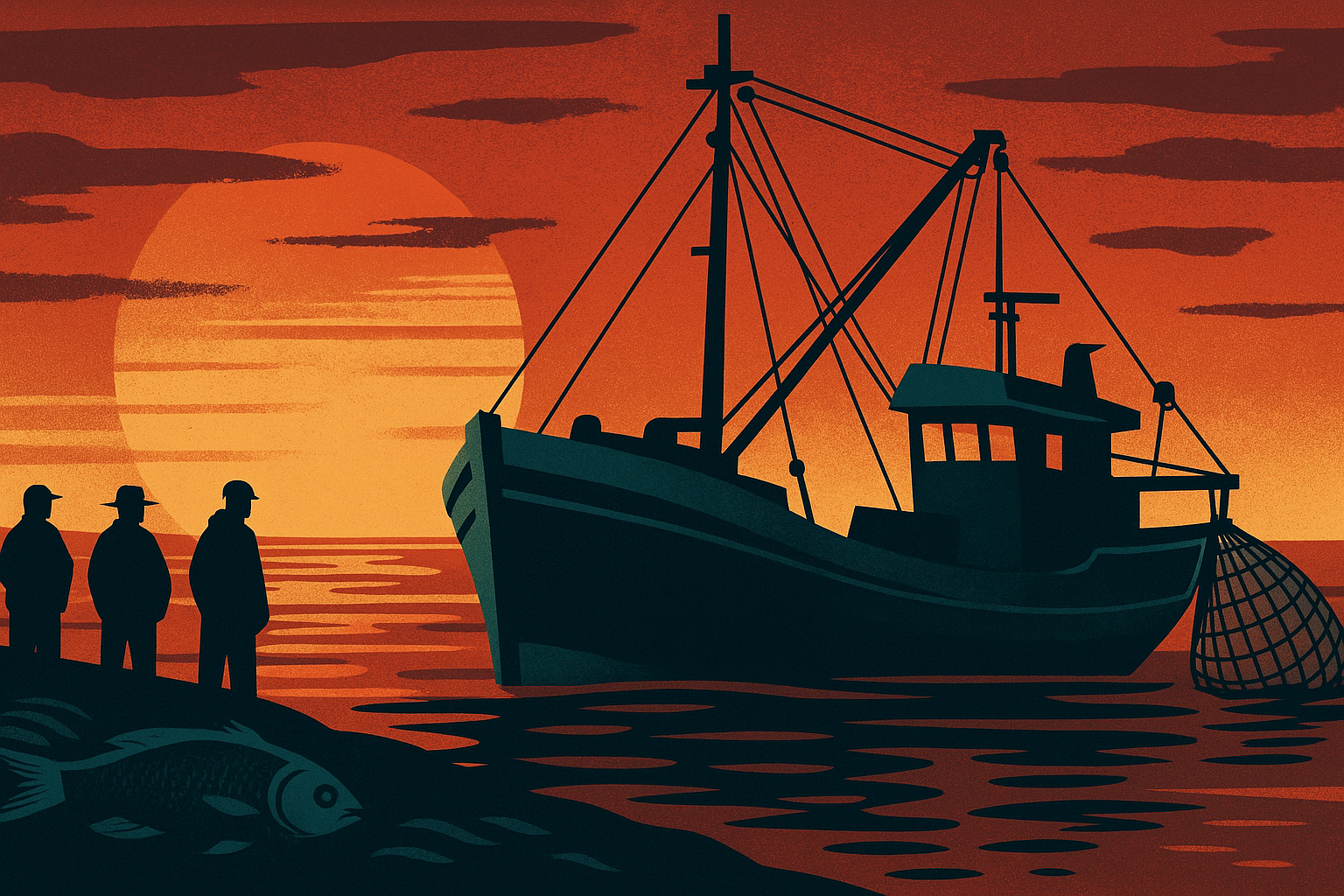The UK’s fishing industry, once hailed as a symbolic cornerstone of national sovereignty during the Brexit campaign, now finds itself grappling with broken promises, policy setbacks, and mounting economic pressures. A recently signed agreement between the UK government and the European Union has renewed access for EU fishing vessels in British waters for another 12 years, sparking frustration among British fishers who had anticipated more control post-Brexit.
A Deal That Reignites Industry Frustration
The agreement, signed in May under Prime Minister Keir Starmer’s leadership, extended an existing arrangement with the EU and preserved fishing quotas. While it also enabled progress in other areas such as energy trade and agricultural exports, it left the UK fishing sector feeling sidelined.
European Commission President Ursula von der Leyen described the deal as “historic,” and Starmer emphasized its potential £9 billion economic benefit. However, industry voices argue the catching sector has been left behind.
Mike Roach, Deputy Chief Executive of the National Federation of Fishermen’s Organisations (NFFO), expressed the industry’s disillusionment:
“Not a single promise has materialised since Brexit. We now have to wait 12 more years for opportunities.”
Roach said the deal prioritizes sectors like salmon and mussel farming while marginalizing the catching segment. He added that fishers feel used as leverage in broader negotiations, rather than being genuinely supported.
Economic and Safety Pressures
The romanticized image of Britain’s fishing industry belies the harsh economic and physical realities faced by fishers. According to data from Seafish, a public body monitoring the sector, both the value of catches and the number of boats in the UK fleet have declined significantly over the past decade.
A 2020 report by the New Economics Foundation labeled fishing the most dangerous job in the UK by per capita fatalities, noting that many workers lack basic protections such as paid leave, sick pay, or pension plans. The industry also struggles to attract new generations of seafarers amid this instability.
Regulatory and Environmental Headwinds
The sector faces additional pressures from new government regulations, including proposals to ban bottom trawling, expanded health and safety rules, and the rapid development of floating offshore wind farms. These changes are contributing to what the industry calls a growing “spatial squeeze,” reducing viable fishing zones.
The Cornwall Fish Producers’ Organisation reports that every job at sea supports up to 15 jobs on land, highlighting the broader economic importance of the industry to coastal communities—an aspect that fishers say is often overlooked in policymaking.
Shifting Marine Ecosystems
Marine dynamics are also changing. The Marine Management Organisation reports that mackerel has become the most abundant fish in British waters, overtaking species like herring, which declined due to historical overfishing. Shellfish such as crabs and scallops have risen in commercial importance, while warming seas are pushing cold-water species like cod and haddock farther north, reducing their availability to UK fishers.
This summer, an unexpected influx of octopuses off the southwest coast further underscores the unpredictability of marine ecosystems and raises concerns about disruptions to existing fish stocks.
Mismatch Between Supply and Consumer Demand
Despite the UK’s maritime capacity, domestic consumer demand does not align with what is caught in local waters. The UK’s top five most-consumed seafoods—salmon, cod, haddock, tuna, and prawns—are mostly imported. Meanwhile, UK-caught shellfish is valued more in European and Asian markets than by British retailers, making the UK a net importer of seafood.
Is There a Silver Lining?
When asked whether any post-Brexit policies had benefited the industry, Mike Roach acknowledged the introduction of new Fishing Management Plans. These plans, based on scientific data and stakeholder collaboration, represent a departure from the EU’s Common Fisheries Policy and have fostered a more cooperative environment between regulators and the industry—despite the administrative burden involved.
Meanwhile, the UK government maintains that its policies will support the fishing sector. A spokesperson from Defra (Department for Environment, Food & Rural Affairs) stated that recent deals improve market access for UK seafood and preserve British fishing rights in EU waters. Additionally, a new £360 million Fisheries and Coastal Growth Fund has been introduced to support the industry.
Conclusion
While the post-Brexit political narrative promised renewed prosperity for Britain’s fishing industry, the reality on the ground suggests a sector under sustained pressure—from policy compromises, environmental change, regulatory shifts, and global market dynamics. Unless further support and long-term reforms are implemented, the outlook for the UK’s fishing fleet remains challenging.








